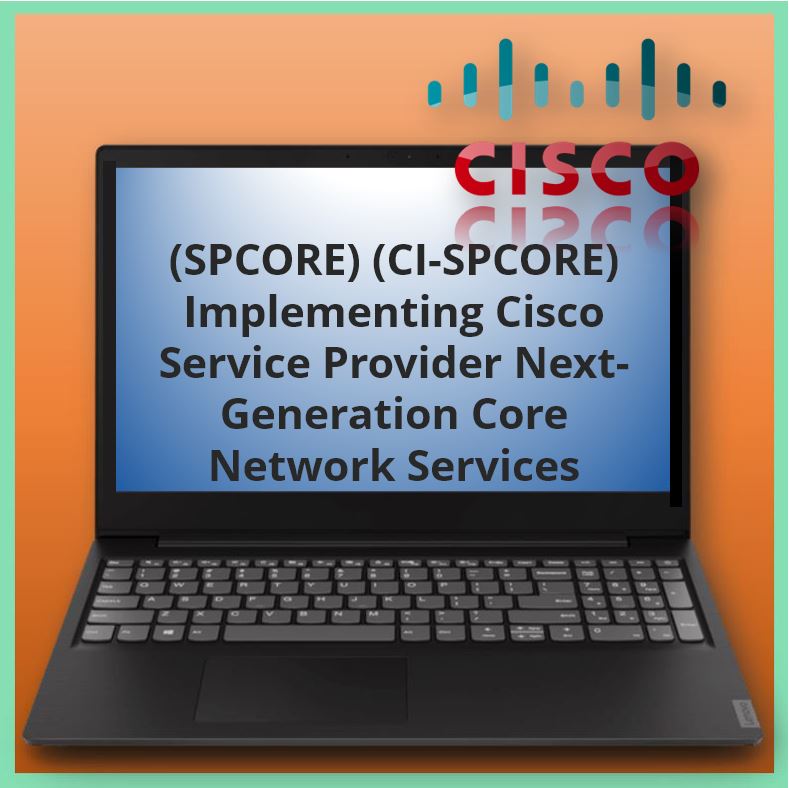Aangeboden leervormen

Implementing Cisco Service Provider Next-Generation Core Network Services (SPCORE) (CI-SPCORE)
The Implementing Cisco Service Provider Next-Generation Core Network Services (SPCORE) v1.0 course is designed to help students prepare for Cisco CCNP® Service Provider certification. This course is a component of the CCNP SP curriculum.
The course introduces the concepts of Multiprotocol Label Switching (MPLS) and describes its implementation It explains the MPLS Traffic Engineering (MPLS TE) services built on the MPLS technology. MPLS is a high-performance method for forwarding packets through a network and enables routers at the edge of a network to apply simple labels to packets. This practice allows the core devices—ATM switches or existing routers in the center of the service provider core—to switch packets according to labels, with minimal lookup overhead. The course also enables learners to use the technology principles of basic quality of service (QoS), and QoS with MPLS, to implement advanced features and functions. The focus of the course is on the technology issues of MPLS and on best practices for implementing QoS from the service provider perspective, as well as how to configure some of those features and functions in an existing routed environment.
The course also includes classroom activities with remote labs that are useful to gain practical skills on deploying Cisco IOS, IOS XE, and IOS XR features to operate and support the service provider network.
Upon completing this course, the learner will be able to meet these overall objectives:
• Describe the features of MPLS, and how MPLS labels are assigned and distributed
• Discuss the requirement for traffic engineering in modern networks that must attain optimal resource utilization
• Introduce the concept of QoS and explain the need to implement QoS
• Classify and mark network traffic to implement an administrative policy requiring QoS
• Introduce different Cisco QoS queuing mechanisms used to manage network congestion
• Introduce the concept of traffic policing and shaping, including token bucket, dual token bucket, and dual-rate policing

Voor wie
The primary audience for this course is as follows:
• Network administrators, network engineers, network managers, and systems engineers who would like to implement MPLS and MPLS TE in the core portion of service provider environments, and ensure QoS in the service provider backbone.
The secondary audience for this course is as follows:
• Network designers and project managers. The course is also recommended to all individuals preparing for CCNP SP certification.
Programma
1: Multiprotocol Label Switching
Learn the features of MPLS, how to configure them, and how MPLS labels are assigned and distributed.
• Introducing MPLS
• Basic MPLS Concepts
• MPLS Labels
• MPLS Applications
• Running Label Distribution Protocol
• LDP Process
• Forming Label Switched Path
• MPLS Convergence
• Platform Switching Mechanisms
• Implementing MPLS in the Service Provider Core
• Configure MPLS
• Monitor MPLS
• Troubleshoot MPLS
• LAB: Implement MPLS in the Service Provider Core
2: MPLS Traffic Engineering
Learn how to assess requirements for traffic engineering in modern service provider networks that must attain optimal resource utilization.
• Introducing MPLS Traffic Engineering Components
• MPLS TE Concepts
• MPLS TE Components
• MPLS TE Process
• Running MPLS Traffic Engineering
• Constraint-Based Path Computation
• Path Setup and Maintenance
• Assigning Traffic to Traffic Tunnels BGP Confederations
• Implementing MPLS TE
• MPLS TE Configuration
• MPLS TE Path Selection MPLS TE Process
• Protecting MPLS TE Traffic
• Link and Node Protection
• MPLS TE Bandwidth Control
• LAB: Implementing MPLS TE
3: QoS in the Service Provider Network
This provides an understanding of the concept of QoS and explains the need to implement QoS.
• Understanding QoS
• Understanding QoS
• Models for Implementing QoS
• Implementing Cisco QoS and QoS Mechanisms
• QoS Mechanisms
• Implementing QoS
• QoS in Service Provider Environment
• LAB: Use QoS Mechanisms
• Implementing MPLS Support for QoS
• MPLS QoS
• MPLS DiffServ QoS Models
• LAB: Implement MPLS Support for QoS
4: QoS Classification and Marking
This describes how to successfully classify and mark network traffic to implement a policy according to QoS requirements.
• Understanding Classification and Marking
• Classification and Marking
• Using the Modular QoS CLI
• Using MQC for Classification
• Using MQC for Class-Based Marking
• Implementing Advanced QoS Techniques
• Network-Based Application Recognition
• QoS Tunneling Techniques
• QoS Policy Propagation via BGP
• Hierarchical QoS
• LAB: Implement Classification and Marking
5: QoS Congestion Management and Avoidance
This describes different Cisco QoS queuing mechanisms used to manage network congestion and describes random early detection used to avoid congestion.
• Managing Congestion
• Introducing Queuing
• Understanding Queuing Implementations
• Configuring CBWFQ
• Configuring LLQ
• LAB: Implement Queuing
• Implementing Congestion Avoidance
• Introducing Congestion Avoidance
• Introducing RED
• Configuring WRED
• LAB: Implement Congestion Avoidance
6: QoS Traffic Policing and Shaping
This describes the concept of traffic policing and shaping, including token bucket, dual token bucket, and dual-rate policing.
• Understanding Traffic Policing and Shaping
• Traffic Policing and Shaping
• Implementing Traffic Policing
• Class-Based Policing
• Local Packet Transport Services
• LAB: Implement Traffic Policing
• Implementing Traffic Shaping
• Class-Based Shaping
• LAB: Implement Traffic Shaping
Voorkennis
The knowledge and skills that a learner must have before attending this course are as follows:
• Intermediate to advanced knowledge of Cisco IOS, IOS XE, and Cisco IOS XR Software configuration
• Skills and knowledge equivalent to those learned in these courses:
o Building Cisco Service Provider Next-Generation Networks, Part 1 (SPNGN1)
o Building Cisco Service Provider Next Generation Networks, Part 2 (SPNGN2)
o Deploying Cisco Service Provider Network Routing (SPROUTE)
o Deploying Cisco Service Provider Advanced Network Routing (SPADVROUTE)
Examen
–
Duur training
Klassikaal: 5 dagen







